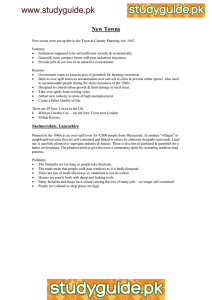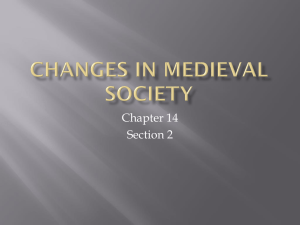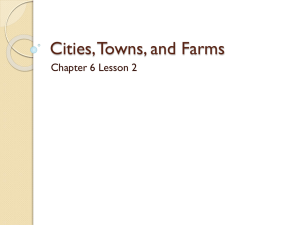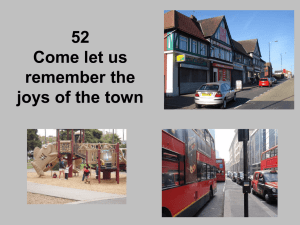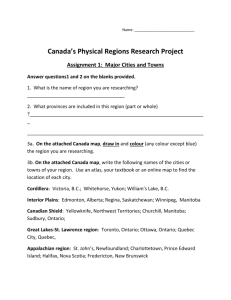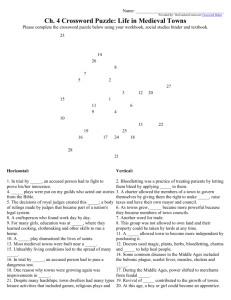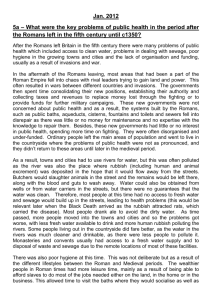The-Rise-of-Towns-Close-Activity
advertisement
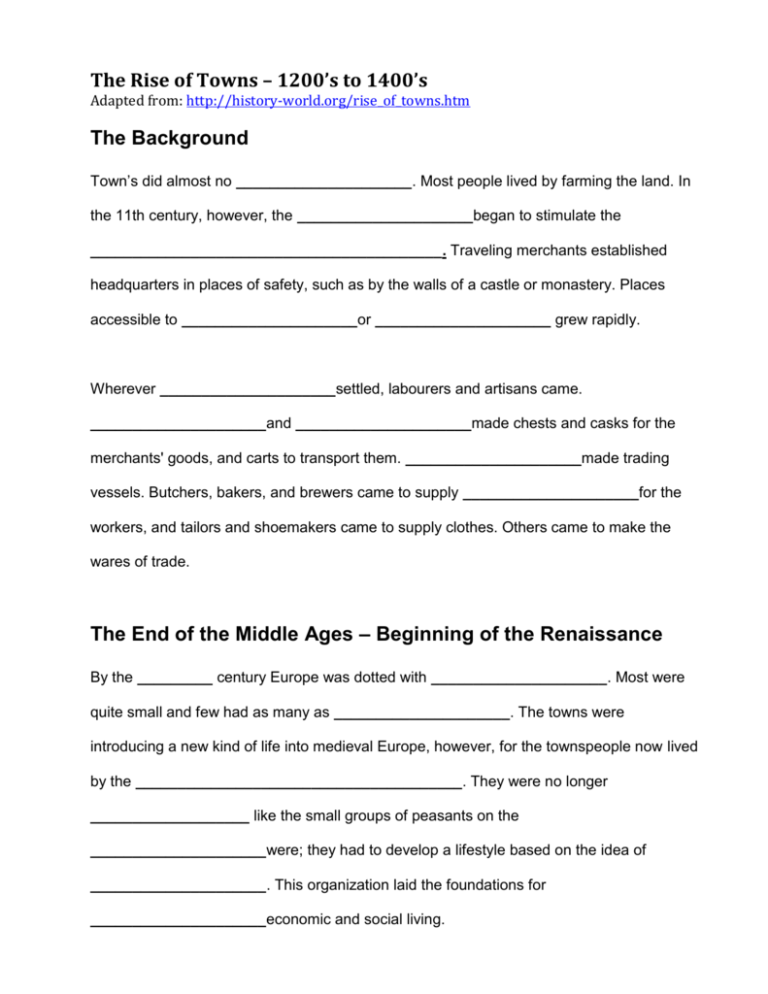
The Rise of Towns – 1200’s to 1400’s Adapted from: http://history-world.org/rise_of_towns.htm The Background Town’s did almost no _____________________. Most people lived by farming the land. In the 11th century, however, the _____________________began to stimulate the __________________________________________. Traveling merchants established headquarters in places of safety, such as by the walls of a castle or monastery. Places accessible to _____________________or _____________________ grew rapidly. Wherever _____________________settled, labourers and artisans came. _____________________and _____________________made chests and casks for the merchants' goods, and carts to transport them. _____________________made trading vessels. Butchers, bakers, and brewers came to supply _____________________for the workers, and tailors and shoemakers came to supply clothes. Others came to make the wares of trade. The End of the Middle Ages – Beginning of the Renaissance By the _________ century Europe was dotted with _____________________. Most were quite small and few had as many as _____________________. The towns were introducing a new kind of life into medieval Europe, however, for the townspeople now lived by the _______________________________________. They were no longer ___________________ like the small groups of peasants on the _____________________were; they had to develop a lifestyle based on the idea of _____________________. This organization laid the foundations for _____________________economic and social living. As the cities grew _____________________they sought the right to __________________________________________ The first to free themselves from the power of feudal lords were in _____________________--Venice, Pisa, Genoa, Florence, and others. Towns in France were next to gain power, then towns along the Rhine Valley in Germany. Some of the towns _________________their freedom from the nobles and the church; others ________________bitter battles to win it. A few were ________________it. Interacting with the growth of towns was the ____________________________. Many serfs _____________________from the _____________________and made their way to the _____________________. After living a year and a day in the town, a serf was considered a _____________________. After the _____________________, this accelerated greatly with many of the _____________________moving to towns and cities, away from the manors and farms. They were looking for _____________________to improve their lives and _____________________not experienced in the old feudal system. A medieval townsman's _____________________was based on _____________________rather than _____________________. At the top of the social scale were the princes of trade, the great _____________________and __________________________, bearing such names as _____________________, Fugger, and Coeur. Then came the moderately wealthy merchants and below them the __________________________________________. On the lowest level were the __________________________________________, whose miserable lot and discontent were destined to continue through the rest of the Middle Ages and into the Renaissance. What did a city in this time look like? In the towns the houses were packed together because every town had to be a fortress, with stout, high walls and a moat or river to protect it from hostile nobles, pirates, and robber bands. The smaller the walled enclosure, the easier it was to defend. The only open places were the market square in the town center, the cathedral, and the few gardens of the rich. Main streets led like spokes of a wheel from the market to the few gates in the walls. Building room was so cramped that the houses were built in several narrow stories, the upper floors jutting over the alley-like streets. Few streets were paved. In wet weather people floundered almost knee-deep in mud. The street was the only sewer. It sloped to the center, and refuse and chamber waste were flung into it. Pigs rooted in the odorous filth. Wells, springs, and rivers were the only water supply. They were unprotected and untreated, so that plagues were frequent.
